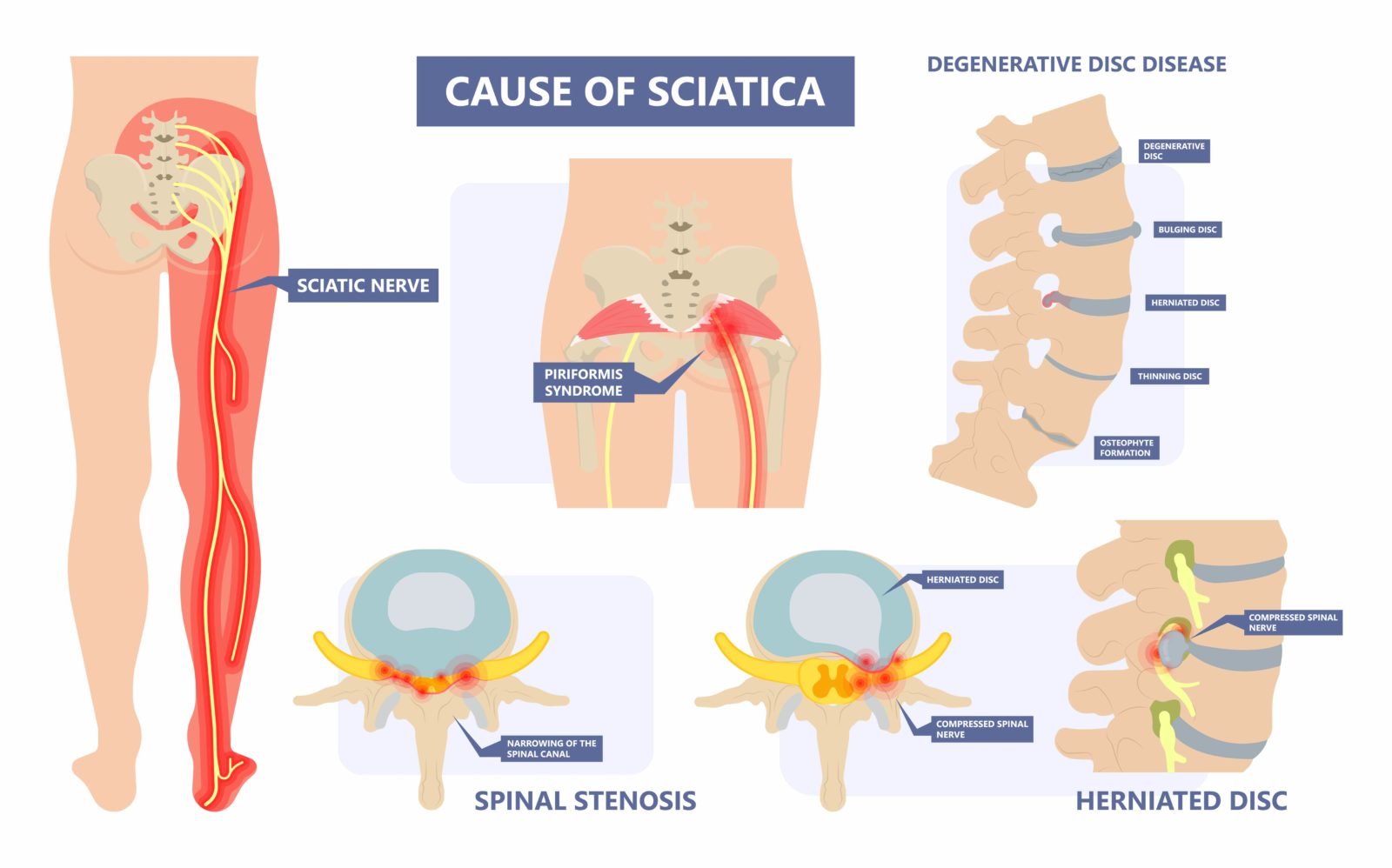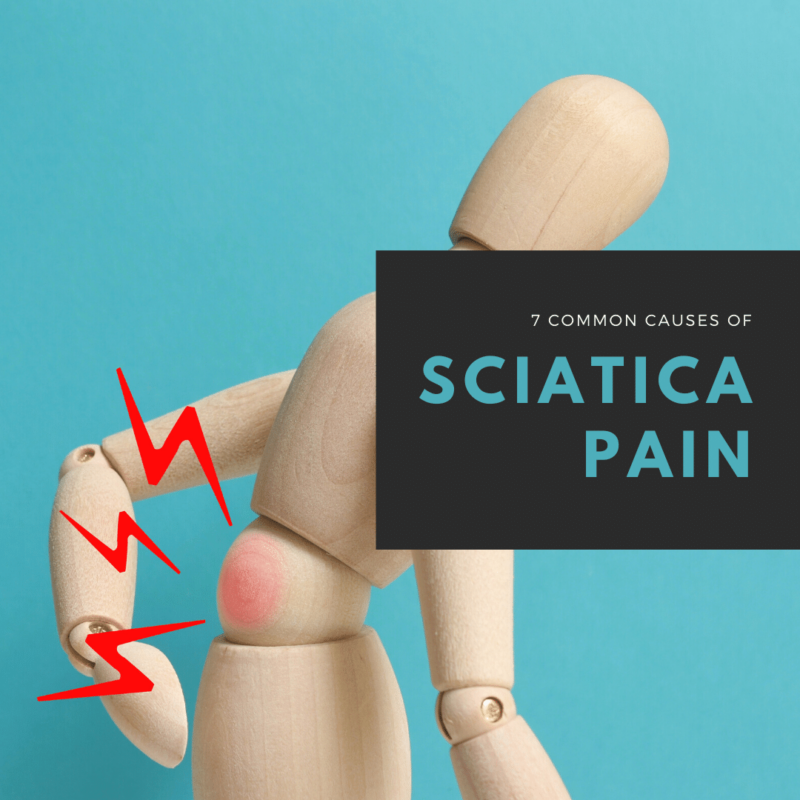A lot of people suffer from sciatica pain. It can be debilitating and make movement difficult. But if you know what is causing the problem, you can take steps to alleviate it. The sciatic nerve is a large, bulky bundle of nerves that runs from the lower spine through the leg and down into the foot. It may be compressed or inflamed anywhere along its path, leading to symptoms such as pain and numbness in one or both legs. When it comes to treating sciatica pain, identifying the cause is a crucial step. This blog will explore the most common causes of sciatica and what you can do about it.
Herniated Discs:
One of the most common causes of sciatica is a herniated disc. A herniated disc occurs when the soft inner core of the disc pushes through the tougher outer layer. This may cause compression or inflammation of the nearby nerve roots, leading to pain, numbness, and tingling in the legs. The inner disc material is also composed of hyaluronic acid, which causes nerve inflammation.
Degeneration:
Another common cause of sciatica is degenerative disc disease, which causes the discs to dry out and shrink over time. While degenerative disc disease is not a direct cause of sciatica, it can lead to herniated discs if enough pressure builds up on one side of a weakened or bulging disk. Maintaining a healthy weight, not smoking, being more active, and practicing proper lifting techniques are all ways to help slow disc degeneration and reduce the risk of herniated discs.
Stenosis:
Stenosis is a narrowing of your spinal canal over time because of arthritis or injury. The spinal nerves branch out from the spinal cord through passages called neural foramina. However, these passages become smaller and smaller when the spinal cord narrows. When this happens, it can lead to compression and irritation on nearby nerves as they are squeezed against the edges of the spine’s bony structure. As with herniated discs, stenosis often causes pain, numbness, and tingling in the legs.

Spondylolisthesis:
This is a condition where one or more vertebrae in your spine slips out of place, specifically forward over another vertebrae. When this happens, it can cause compression on nearby nerves and lead to sciatica-like symptoms. This developmental spondylolisthesis can be present at birth or develop during childhood. Another type, acquired spondylolisthesis, can occur when the spine degenerates, is physically stressed, or undergoes trauma.
Trauma:
A sudden, traumatic injury to the spine can also lead to sciatica pain. This may include a car accident, fall, or sports injury. Traumatic injuries often cause damage to the discs and surrounding tissues, which can lead to inflammation and compression of the nerve roots. The nerves can also be irritated by broken bone fragments, or penetrated objects such as a bullet or knife blade.
Piriformis Syndrome:
Piriformis syndrome is a condition where the piriformis muscle, which is located in the buttocks, becomes tight and compresses the sciatic nerve. This can cause pain, numbness, and tingling in the leg that may be mistaken for sciatica.
Tumors:
Spinal tumors can also cause sciatica-like symptoms by compressing the nerve roots. This includes tumors that originate in the spine as well as those originating elsewhere, such as a tumor outside of the spine pressing on surrounding nerves. However, it is important to note that spinal tumors are rare.
Sciatica pain is a common cause of back and leg pain in adults. The most common causes are herniated discs, degeneration, stenosis, spondylolisthesis, trauma, piriformis syndrome or tumors. However these symptoms can be caused by other factors as well so it’s important to get an accurate diagnosis before making any decisions about treatment options.
If you have sciatica-like symptoms that persist for more than six weeks despite conservative treatments such as rest and over the counter medications, then your doctor may recommend surgery to address the source of your discomfort. One option would be spinal decompression which involves removing pressure from compressed nerves with small incisions made into the spine where they protrude through its bony structure near the spinal cord. Other surgical procedures that may be recommended include laminectomy, foraminotomy, and discectomy.
Talk to your doctor about the best treatment options for you based on your individual symptoms and medical history.










